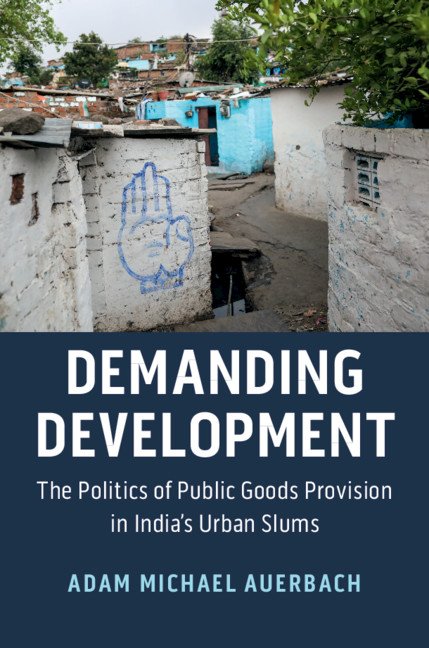
Neighborhood Economic Change in an Era of Metropolitan Divergence
Why do some neighborhoods change rapidly in race and class composition, while others do not? Despite a growing consensus among scholars that neighborhood sociodemographics shape residents’ life chances and societal inequities, the key drivers of neighborhood change – especially gentrification – remain hotly contested. Most research examines salient neighborhood characteristics rather than metropolitan area characteristics, precluding a complete picture of neighborhood change from emerging.

Examining the Dynamics Between Formal and Informal Institutions in Progressive City Planning
Urban public space serves a myriad of social, economic, civic, and environmental functions that ultimately play an important role in improving our quality of life. Uses range from protest and engagement with the state to the manifestation of cultural expressions, and from commercial and livelihood ends to exercise and recreation. Despite its benefits, the conservation and creation of public space can be a challenge in cities with growing populations, little land for expansion due to geographical or administrative boundaries, and tight land markets.

Jurisdictional Size and Residential Development
Our article in Urban Affairs Review examines data for thousands of U.S. census tracts to assess whether the population size of local jurisdictions matters for the magnitude of change in multifamily housing units. Multifamily housing is an especially policy-relevant topic, as recent years have seen escalating concern over high housing costs, stunted socioeconomic mobility, and lengthy commute times, especially in the nation’s most job-rich metro areas.

When Agency Challenges Structure
Running for political office is a demanding and complicated affair. Aspirants must navigate convoluted social and political structures in order to decide if they wish and feasibly can launch their candidacies. Further, they have an endless number of choices to make relating to the management of their campaigns: which issues to champion, which groups and segments of society to appeal to, how to shape the narrative about the issues confronting their electoral jurisdictions, and how to portray themselves as the right person to resolve those challenges, among many others.

Progressive Urbanism in Small Towns
Progressive politics is increasingly thought of in terms of cities. They were nodes of resistance to Trumpism in the USA and are centers of a new municipalist movement. In response, there has been growing interest in developing progressive urban policy agendas drawing on examples across a range of cities. But what is it about the urban that drives progressive political projects? And might there be differences between larger and smaller urban areas?

Zane L. Miller Book Development Award
Temple University Press and the editors of the Urban Life, Landscape, and Policy series are pleased to announce the Zane L. Miller Book Development Award, named in honor of our late founding series editor.

The End of the Right to the City
Social and material conditions in cities around the world are deeply unjust. Increasing material inequalities, social exclusion, hierarchy and domination face urban inhabitants in many settings. In response to these realities, the ‘right to the city’ (RTTC) has become a concept that is widely used by those who seek to build more just and inclusive cities. The RTTC frames the goals of urban advocacy groups around the world, the policy objectives of international organizations, and even makes an appearance in a piece of national legislation in Brazil.

Staying Afloat
or many coastal communities, there is no escaping the realities of sea level rise (SLR) because they already experience visible disruptions from it, ranging from nuisance flooding to enhanced storm surge. However, bigger problems lie down the road. Critical Infrastructure that provides water supply, wastewater treatment, control of stormwater runoff, and transportation are recognized as vulnerable to SLR and intensification of existing flooding hazards .

You Won't be My Neighbor
The 1926 Supreme Court decision Euclid v. Ambler upheld the right of cities to use their police powers to regulate how and where development would occur within their borders. In his opinion, Justice Sutherland famously described the apartment house as, “often a mere parasite, constructed in order to take advantage of the open spaces and attractive surroundings created by the residential character of the district.”

Business Improvement Districts (BIDs) in Philadelphia and their Potential as Regional Actors
Business improvement districts (BIDs) are special service and assessment districts that typically cover territories as large as the downtown of a central city or as small as the commercial corridor of an outlying neighborhood. These organizations typically collect mandatory fees – assessments – from property owners within their areas to fund projects and provide services such as cleaning streets, providing security, installing streetscape improvements, and marketing the area.

Race, Activism, and Localism in the Metropolis
Generations of research by political scientists and historians paint a consistent – and deeply disturbing – picture of the American metropolis. From different directions, their work depicts a political patchwork designed to facilitate resource hoarding and enforce segregation by race and income. Long entrenched local government powers over land use have made racial and spatial inequality the defining feature of the American metropolis. Special districts, the most numerous boundary-spanning organizations, help the patchwork metropolis function but they are not known for challenging the economic and racial inequalities it protects (Savitch and Adhikari 2017).

American Regionalism and the Constellation of Mechanisms for Cross-Boundary Cooperation
In this colloquium, we explore the variety of actors involved in the cross-boundary cooperation that we associate with American regional governance and the evolving connections and relationships between them. We aim to produce a cutting-edge review of the state of the field of American regionalism that is accessible, thought provoking, and forward looking. In bringing together scholarship on different mechanisms for cross-boundary cooperation, and highlighting common themes, we hope to transcend some of the barriers in our field and begin to develop a comprehensive, grounded, and modern understanding of the dimensions of regional governance.

The Future of Collaborative Leadership in Contemporary Regional Entities
This contribution by George Dougherty (University of Pittsburgh) and Suzanne Leland (University of North Carolina at Charlotte) reminds us that although the landscapes of American regional activity are populated by organizations, those organizations are made up of people. While we often discuss these organizations in the abstract – as entities with agendas, and responsibilities, capacity, and legal agency – these are decided on and executed by individuals.

Demanding Development: The Politics of Public Goods Provision in India’s Urban Slums
Squatter settlements dot the cities of the Global South, but they exhibit uneven access to public goods. Auerbach tackles this puzzle in Demanding Development, painting a revealing portrait of local claims making and problem-solving networks in India’s urban slums. In doing so, the author speaks to a central problem of development as public resources for infrastructure are limited and accessed through a complex web of political relationships.

Understanding Urban Retail Vacancy
In many cities across the United States, the retail sector has been in long decline and the COVID-19 pandemic has accelerated permanent store and mall closures, bankruptcies, and job losses. Although commercial corridors have been recovering at non-generalizable rates, the disruption to small business activity caused many more storefront vacancies than cities know what to do with. The issue of focus in our paper, storefront retail, is highly valuable as it contributes to the quality of street life, pedestrian-oriented urban design, and active frontage that promotes social exchange.

Who Banishes? City Power and Anti-homeless Policy in San Francisco
Homelessness is a pressing concern facing cities throughout the United States but is especially pronounced in urban California. The state is home to roughly a quarter of all people experiencing homelessness in the country, more than two thirds of whom are unsheltered (about double the national rate). In his 2020 State of the State address, California Governor Gavin Newsom devoted the bulk of his attention to the issue of homelessness, claiming that “the California Dream is dimmed by the wrenching reality of families, children and seniors living unfed on a concrete bed.”

Do Local Immigrant-Welcoming Efforts Increase Immigration?
With decades of deindustrialization and the hard hit of the Great Recession, Detroit is characterized by urban blight, racial tension, residential segregation, and poverty. The region’s leaders have tried several countermeasures including economic diversification and “eds and meds” anchoring, and immigrant attraction appears to have become a sought-after strategy to address the region’s economic and demographic declines. This study examines whether this strategy has brought desirable outcomes, mainly focusing on the efforts led by Global Detroit that started in 2010.

Seeing Like a Neighbor
In cities around the world, informal mutual aid networks are stepping up to help local communities in the midst of a global pandemic. With stay-at-home orders in effect, neighbors are providing services to other residents such as trips to the grocery store and childcare, sharing food, homemade masks, and other amenities. What are the keys to facilitating this mutual aid? Past studies have shown that during times of crisis neighbors often band together to solve problems or mobilize to support one another and improve quality of life. Even if these collaborations are only temporary, neighbors will work together during times of immediate or urgent need in order to ameliorate or deliberate about political concerns or social problems that affect them directly.

Can We Bring Culture into the Large-Scale Study of Gentrification?
Many people think that gentrification leads to displacement, but academic research shows that is not always the case. Many impoverished households in gentrifying neighborhoods try and stay put because they hope to take advantage of the new amenities that gentrification brings, like new grocery stores or city parks. Even more, people in poverty move around a lot – due to eviction, unstable family arrangements, the struggle to find work – so it is hard to determine whether an impoverished person moving out of a gentrifying neighborhood is really moving due to displacement or for another reason.

Place Attachment Fosters Collective Action in Rapidly Changing Urban Neighborhoods
Urban “redevelopment” has been a buzzword for decades – from the post-war urban renewal programs that forced many low-income African Americans from their neighborhoods to modern gentrification fueled by a middle- and upper middle-class push to reduce commute times. Such redevelopment efforts, historically, have been done absent of the residents themselves who must live with the consequences. The result is often social and cultural displacement of longtime residents.